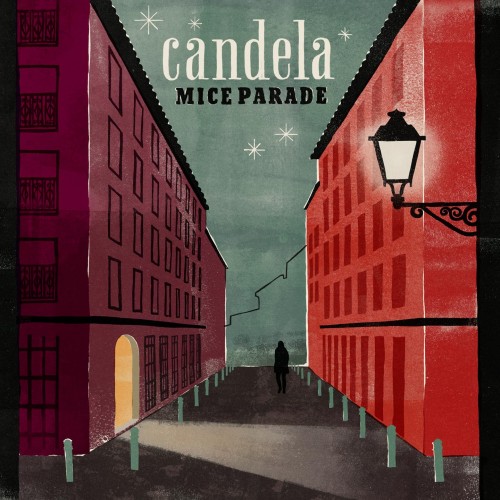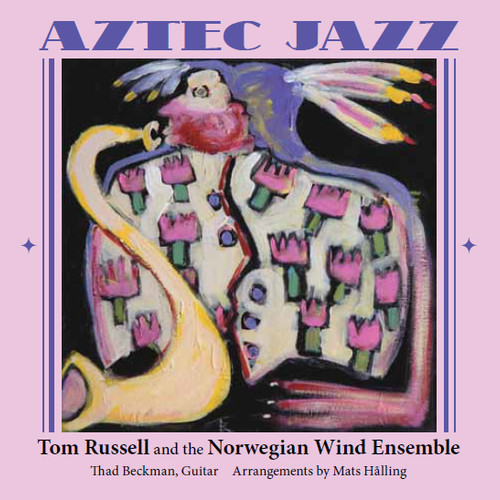MICE PARADE – Candela
aaamusic | On 24, Apr 2013
It’s refreshing whenever your ears find themselves subject to a sound that is new, energizing, and most crucially generically innovative with regards to its artistic origins. This sensation is less refreshing when you realise you’re a little late to the party; this was my experience with Mice Parade and their latest album Candela, which, as it turns out, is the seventh album released under that name. Mice Parade is the brainchild of Adam Pierce (notice any connection there?), an artistic vehicle dedicated to shoegazey poprock with expansive worldly roots and an ever-mutating band line-up; while it’s a little depressing how under the radar a group as interesting and original as this can be, it’s not too late to get listening.
Album opener Listen Hear Glide Dear tingles and rattles, swirling and enveloping. While interesting and certainly aesthetically refined, the use of cavernous reverb feels a bit more like a hindrance than a help, with some of the deeper layered subtleties feeling a bit lost. However, it works much better as a framing device than a standalone track, as the synthetic jingles of Currents echo in hypnotically and white-hot lead guitar sears haphazardly into stutteringly rhythmic drum and bass as the band unfolds itself – and it’s great to hear a group of artists deliver this kind of disarming and original stuff through the format of a more conventional band set up; one that you can feel from their very first notes is together, tight, and talented. Dangerously fractured lead work impresses, as the track breaks down into slow-burn chords, haunting vocals, and a remarkable onslaught of shivering cymbal tides and ghost-note snare rattles.
Dark brooding guitar crashes rumble over monotonous chorus and militaristic drum pounding in This River Has a Tide – techniques which are strikingly married with beautifully stirring ascending melody cascades. It really is a masterstroke of eccentric composition, while the vocal work helps to ground things in familiarity. The arresting jazzy percussive storms continue with Pretending, which presents a mellower, but no less energetic affair. The chilled chords and ethereal melodies provide an interesting contrast to what has come earlier, but Pierce’s best, signature stuff is here, with the track rolling tumultuously into a rumbling and clashing tempest towards its end, full of clattering dynamism.
The compelling synergy of desolate string work and perturbed yet disturbingly beautiful chorus is further expanded upon in The Chill House. While perhaps more dejected than earlier tracks, it also seems to benefit from a certain calmness of execution that the preceding tracks lack in all their tempestuousness, and here I feel we get a little more complete and rewarding aesthetic. Title track Candela gives us a more cosmopolitan taste of Pierce’s more exotic influences, manifesting in a summery-heart Latin-infused holiday of a tune, without sacrificing the album engine of signature unorthodox compositional virtuosity, while punchy drum machines and velvety bass guitar mark Look See Dream Me as yet another character all its own, dancing in and out of swirling melodic effusions and kaleidoscopic synth.
Gente Interesante opens (interestingly) all echoes and rumbles, with stormcloud steamroller basslines and elegant piano reverberations, building to a wondrous bloom with a Mariachi band and Latin keys! One of the best moments on the album, and fantastically representative of Pierce’s globe-trotting influences. Track 9 Contessa gives us the brilliant fusion of an inventive and talented acoustic guitar track with all of the quirky drifting fancy we’ve come to expect that joins together sunsoaked warmth and wintery incongruence in such a compelling way, before glitching out finally to bright endearing piano.
The final track Warm Hand in Narnia broods in ominously with warbling synth chorus, trundling through with climactic, anticipatory percussion, through exploding guitar melodies and building to an overwhelming outro complete with penetrating lead guitar, soaring like spectral drills. The whole thing is as fun as it is unsettling, and that’s what’s so fun about it in the first place. While the production and juxtaposition style often clashes detrimentally in the earlier half of the album, things get a little more solid and refined later on; the best thing about the work is that not only is the whole off-the-wall affair delivered by an enjoyably tight group of musicians, but its dynamic use of rarely seen influences belie a genuine love for those styles and aesthetics, along with a passion to deliver them in such a way that somehow manages to reinvigorate them two-fold for us listeners who are tired of the usual musical ennui.
Matt Fellows




